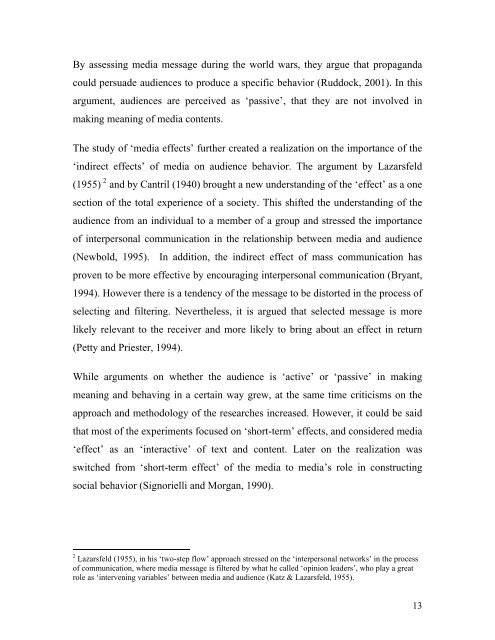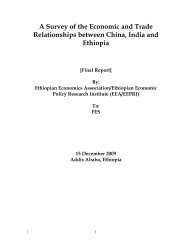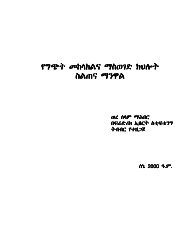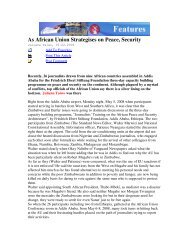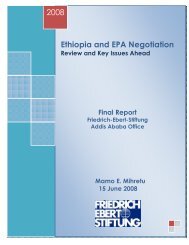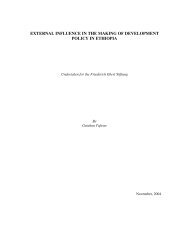Audience Survey Conducted on “Dewel†Radio ... - FES Ethiopia
Audience Survey Conducted on “Dewel†Radio ... - FES Ethiopia
Audience Survey Conducted on “Dewel†Radio ... - FES Ethiopia
You also want an ePaper? Increase the reach of your titles
YUMPU automatically turns print PDFs into web optimized ePapers that Google loves.
By assessing media message during the world wars, they argue that propaganda<br />
could persuade audiences to produce a specific behavior (Ruddock, 2001). In this<br />
argument, audiences are perceived as ‘passive’, that they are not involved in<br />
making meaning of media c<strong>on</strong>tents.<br />
The study of ‘media effects’ further created a realizati<strong>on</strong> <strong>on</strong> the importance of the<br />
‘indirect effects’ of media <strong>on</strong> audience behavior. The argument by Lazarsfeld<br />
(1955) 2 and by Cantril (1940) brought a new understanding of the ‘effect’ as a <strong>on</strong>e<br />
secti<strong>on</strong> of the total experience of a society. This shifted the understanding of the<br />
audience from an individual to a member of a group and stressed the importance<br />
of interpers<strong>on</strong>al communicati<strong>on</strong> in the relati<strong>on</strong>ship between media and audience<br />
(Newbold, 1995). In additi<strong>on</strong>, the indirect effect of mass communicati<strong>on</strong> has<br />
proven to be more effective by encouraging interpers<strong>on</strong>al communicati<strong>on</strong> (Bryant,<br />
1994). However there is a tendency of the message to be distorted in the process of<br />
selecting and filtering. Nevertheless, it is argued that selected message is more<br />
likely relevant to the receiver and more likely to bring about an effect in return<br />
(Petty and Priester, 1994).<br />
While arguments <strong>on</strong> whether the audience is ‘active’ or ‘passive’ in making<br />
meaning and behaving in a certain way grew, at the same time criticisms <strong>on</strong> the<br />
approach and methodology of the researches increased. However, it could be said<br />
that most of the experiments focused <strong>on</strong> ‘short-term’ effects, and c<strong>on</strong>sidered media<br />
‘effect’ as an ‘interactive’ of text and c<strong>on</strong>tent. Later <strong>on</strong> the realizati<strong>on</strong> was<br />
switched from ‘short-term effect’ of the media to media’s role in c<strong>on</strong>structing<br />
social behavior (Signorielli and Morgan, 1990).<br />
2 Lazarsfeld (1955), in his ‘two-step flow’ approach stressed <strong>on</strong> the ‘interpers<strong>on</strong>al networks’ in the process<br />
of communicati<strong>on</strong>, where media message is filtered by what he called ‘opini<strong>on</strong> leaders’, who play a great<br />
role as ‘intervening variables’ between media and audience (Katz & Lazarsfeld, 1955).<br />
13


